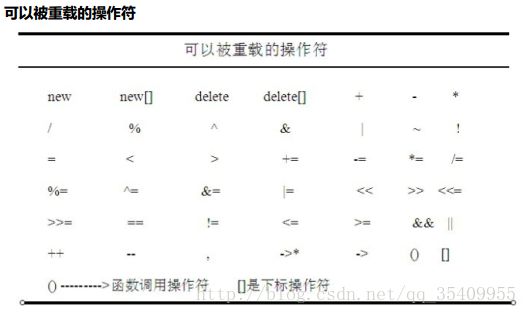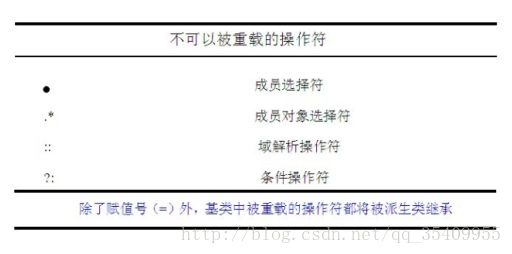- LRU缓存C++
monicaaaaan
乐扣刷题缓存c++spring
请你设计并实现一个满足LRU(最近最少使用)缓存约束的数据结构。实现LRUCache类:LRUCache(intcapacity)以正整数作为容量capacity初始化LRU缓存intget(intkey)如果关键字key存在于缓存中,则返回关键字的值,否则返回-1。voidput(intkey,intvalue)如果关键字key已经存在,则变更其数据值value;如果不存在,则向缓存中插入该组k
- (LeetCode 面试经典 150 题 ) 238. 除自身以外数组的乘积 (前缀和)
岁忧
LeetCode面试经典150题LeetCodeC++JAVAGo版本leetcode面试算法c++gojava
题目:238.除自身以外数组的乘积思路:前缀和,时间复杂度0(n)。先用前缀和预处理出前n的乘计和,然后第二次遍历时,从后往前,同时维护右边的乘计和即可。C++版本:classSolution{public:vectorproductExceptSelf(vector&nums){intn=nums.size();vectorpre(n,1);pre[0]=nums[0];for(inti=1;i
- 算法训练营|数组总结
慧泽huize
数据结构算法leetcodepythonc++
时间复杂度:算法执行语句的次数空间复杂度:算法在运行过程中临时占存储空间大小数组(C++):存放在连续内存空间的相同类型固定大小的数据的集合,不能删除,只能覆盖列表(Python):数据可以是不同类型,列表长度可变1.二分查找循环不变量原则,清楚区间定义时间复杂度:O(logn)空间复杂度:O(1)2.双指针法快指针找到新数组元素,慢指针指向新数组下标时间复杂度:O(n)空间复杂度:O(1)3.双
- 手把手教程:在 VS2017 32位 Windows 环境下编译 OR-Tools 9.6 并集成到 C++ 项目
A小庞
C++知识算法c++开发语言or-tools算法库
OR-Tools是Google开源的优化算法库,支持路径规划、线性规划、约束编程等多种功能。本文将详细介绍在VisualStudio201732位Windows环境下编译OR-Tools9.6的两种方法:联网自动下载依赖和手动编译依赖项,并提供避坑指南。方法一:联网自动下载依赖(推荐新手)步骤1:克隆OR-Tools仓库gitclonehttps://github.com/google/or-to
- Visual Studio 编译错误 LNK2038:MTD 和 MDD 的区别及解决方法
A小庞
C++知识个人visualstudiowindowside
在使用VisualStudio进行C++项目开发时,我们经常会遇到一些编译错误。其中,LNK2038错误是一个比较常见的链接器错误,通常与运行时库(RuntimeLibrary)的配置不匹配有关。本文将详细介绍MTD和MDD的区别,以及如何解决因运行时库配置不匹配导致的编译错误。一、错误示例以下是一个典型的LNK2038错误示例:从错误信息中可以看出,链接器检测到了运行时库的不匹配项,具体表现为M
- C++正则表达式语法
Coding小公仔
c/c++c++正则表达式开发语言
在C++中,正则表达式是处理文本模式匹配和字符串操作的强大工具。C++11及以后的标准库提供了头文件,支持正则表达式的使用。下面是C++正则表达式的核心语法规则和用法:一、基本正则表达式语法1.普通字符直接匹配自身,例如:a匹配字符a。2.元字符(需转义)具有特殊含义的字符,需用反斜杠\转义(在C++字符串中需用双反斜杠\\)。.:匹配除换行符外的任意字符。^:匹配字符串的开头。$:匹配字符串的结
- 【C++】简单学——类和对象(下)
CtrlZ小牛码
C++简单学c++开发语言
初始化列表前提:对象实例化,成员变量就整体定义了,那么成员变量是在哪里单体定义初始化的?构造函数处吗?概念概念:初始化列表是每个的成员定义初始化的位置位置:在构造函数底下结构::代表开始,代表分点classDate{public:////初始化列表Date(intyear,intmonth,intday):_year(year),_month(month),_day(day){}}语法一个成员变量
- 【C++】简单学——类和对象(中)
CtrlZ小牛码
C++简单学c++开发语言
六个默认成员函数共性你如果没有写这六个成员函数,编译器就会自动帮你写编译器会自动调用构造函数析构函数拷贝构造函数赋值运算符重载取地址运算符重载被const修饰的取地址运算符重载构造函数作用帮助你初始化以前的初始化的问题:总是会忘记初始化,然后用着用着就崩了使用的位置:对象实例化的时候这几个词要区分开来默认成员函数:类里“隐藏”的6个特殊函数(包括构造函数、析构函数、拷贝构造等),不写时编译器自动生
- C++程序实现阻止屏保、阻止系统自动关闭屏幕、阻止系统待机(附源码)
dvlinker
C/C++实战专栏阻止屏保阻止系统自动关闭屏幕阻止系统待机APIMonitor
目录1、概述2、设置屏幕保护程序,修改自动关闭显示器和待机的时间2.1、设置屏保程序2.2、修改自动关闭显示器和待机的时间3、通过屏保的通知消息来阻止屏保4、调用API函数SystemParametersInfo关闭/启用屏保,但存在问题4.1、初步确定处理策略4.2、启动监控进程去监控主进程4.3、系统强行关机的情况无法处理5、使用APIMonitor监测到目标程序对API的调用,找到了问题的突
- 算法竞赛备考冲刺必刷题(C++) | 洛谷 P8814 解密
热爱编程的通信人
算法c++开发语言
本文分享的必刷题目是从蓝桥云课、洛谷、AcWing等知名刷题平台精心挑选而来,并结合各平台提供的算法标签和难度等级进行了系统分类。题目涵盖了从基础到进阶的多种算法和数据结构,旨在为不同阶段的编程学习者提供一条清晰、平稳的学习提升路径。欢迎大家订阅我的专栏:算法题解:C++与Python实现!附上汇总贴:算法竞赛备考冲刺必刷题(C++)|汇总【题目来源】洛谷:P8814[CSP-J2022]解密-洛
- 【C++】atoi和std::stoi
bluebonnet27
编程语言#C++c++算法开发语言
两个将字符串转为int的方法atoi(C语言)atoi是C库中的一个函数,它定义在头文件里。其作用是把一个字符串转换为对应的整数。/*Convertastringtoaninteger.*/externintatoi(constchar*__nptr)__THROW__attribute_pure____nonnull((1))__wur;转换的原则如下:此函数接收一个以空字符'\0'结尾的字符串
- 单双链表及其反转
醇醛酸醚酮酯
开发语言
一,空指针的补充1.空指针的定义在C语言中,空指针通常被定义为NULL,或者在C++中为nullptr。它的本质是一个指针,指向无效的地址,用来表示一个指针当前没有指向有效的内存空间。空指针并不指向实际的内存地址,因此可以用于表示指针没有被初始化或者没有指向任何有效的对象。例如:int*ptr=NULL;//ptr是一个空指针在许多编译器中,空指针通常会被定义为0,或者一个特定的常量值(例如0x0
- 【C++】String的使用
nanguochenchuan
C++c++开发语言
字符串基础概念std::stringvsC风格字符串std::string是C++标准库提供的字符串类,相比C风格的char*具有明显优势:自动内存管理丰富的成员函数安全的边界检查支持运算符重载#include//必须包含的头文件std::strings1;//空字符串std::strings2="Hello";//直接初始化charcstr[]="World";std::strings3(cst
- 【Linux】ghb工具
nanguochenchuan
Linux操作系统linux运维服务器
GDB简介GDB(GNUDebugger)是Linux系统中最强大的命令行调试工具,由GNU项目开发。作为程序员调试C/C++程序的利器,GDB能帮助你:定位程序崩溃原因分析程序运行状态跟踪变量值变化检测内存错误安装与配置安装方法#Ubuntu/Debiansudoaptinstallgdb#CentOS/RHELsudoyuminstallgdb#ArchLinuxsudopacman-Sgdb
- c++ io操作(文件的读取与写入)
galaxy_strive
C++Studyc++开发语言
1文件的读取//文件操作模式//ios::app追加模式//ios::ate文件打开后定位到文件末尾//ios::in打开文件用于读取//ios::out打开文件用于写入//ios::trunc如果该文件已经存在,其内容将在打开之前被截断,即把文件长度设置为0//读取文件示例intmain(){fstreamfile("./io.txt",ios::in);//文件是否正常打开if(file.is
- c++常见英文单词(自用)
叫我六胖子
c++英文c++
c++常见英文单词application应用程式应用、应用程序applicationframework应用程式框架、应用框架应用程序框架architecture架构、系统架构体系结构argument引数(传给函式的值)。叁见parameter叁数、实质叁数、实叁、自变量array阵列数组arrowoperatorarrow(箭头)运算子箭头操作符assembly装配件assemblylanguag
- 【C++算法竞赛】前缀和+桶数组
YLCHUP
C++算法技巧算法c++开发语言数据结构哈希算法c语言笔记
文章目录1.前缀和基础2.算法原理3.例题讲解[P1114“非常男女”计划](https://www.luogu.com.cn/problem/P1114)[P11965[GESP202503七级]等价消除](https://www.luogu.com.cn/problem/P11965)[P10724[GESP202406七级]区间乘积](https://www.luogu.com.cn/pro
- 【C++】命令模式
目录一、模式核心概念与结构二、C++实现示例:遥控器与家电控制三、命令模式的关键特性四、应用场景五、命令模式与其他设计模式的关系六、C++标准库中的命令模式应用七、优缺点分析八、实战案例:数据库事务命令九、实现注意事项如果这篇文章对你有所帮助,渴望获得你的一个点赞!命令模式(CommandPattern)是一种【行为型】设计模式,它将请求封装为对象,从而使你可以用不同的请求对客户端进行参数化,对请
- C++生成静态库和动态库
什么是静态库和动态库在项目开发中,或多或少地需要使用到第三方(非编译器提供)的程序库,使用第三方的程序库能够减少重复造轮子的工作,提高开发效率。本文将介绍如何把自己的写的程序制作为程序库提供给他人使用,学会制作程序库后,自然也就会掌握了如何使用他人提供的程序库了。程序库从使用方式上分为两种,静态库和动态库。当我们在使用第三方提供的静态库时,当编译程序时,需要将我们自己写的程序和第三方库链接在一起形
- C++智能指针编程实例
lixzest
c++开发语言
智能指针是C++11引入的重要特性,用于自动管理动态分配的内存,防止内存泄漏。下面介绍几种高级智能指针编程实例。1.共享所有权模式(shared_ptr)循环引用问题及解决方案#include#includeclassB;//前向声明classA{public:std::shared_ptrb_ptr;~A(){std::couta_ptr;//这里会导致循环引用~B(){std::cout();
- C++ Lambda表达式详解:从入门到精通
Jay_515
c++Lambda
Lambda表达式是C11引入的最重要特性之一,它彻底改变了我们在C中编写函数对象的方式。本文将带你全面掌握Lambda表达式的使用技巧!1.什么是Lambda表达式?Lambda表达式是C++11引入的一种匿名函数对象,它允许我们在需要函数的地方内联定义函数,无需单独命名。Lambda的出现极大简化了代码,特别是在使用STL算法时。为什么需要Lambda?简化代码:避免为简单操作单独编写函数对象
- MongoDB框架零基础入门
码农研究僧
Python100天精通全栈mongodbnosql数据库
目录前言1.安装配置2.关启配置3.基本概念4.基本操作4.1创建集合4.2删除集合4.3插入文档4.4更新文档4.5删除文档4.6查询文档前言先科普讲解一下NoSQL(notonlysql)本身NoSQL非关系型数据库就具备了ACID(原子性、一致性、持久性、隔离性)数据持久化一般还是要使用关系型数据库,内存的数据库使用检索MongoDB是C++编写,一个基于分布式文件存储的开源数据库系统。将其
- C++学习笔记(2)——高精度减法
「已注销」
C++学习笔记(每周至少3篇)C++c++
上篇文章我们了解了高精度加法,今天我们来讲减法。和加法一样,减法也是模拟小学减法竖式:先用数组存下被减数和减数:①如果a[i]b,a[i+1]还可以向a[i+2]借位。借位后a[i+1]等于9,而b[i+1]最大为9。我们来看一下高精度减法的思路:①高精度数的读取存储:使用字符串方式读取,然后转成整型数组,为方便计算,进行逆向存储。②模拟竖式进行减法:相同位置进行相减,不够减时进行借位③去除前导0
- GPS-SDR-SIM与HackONE的融合:C++实现的高效GPS模拟
m0_57781768
c++开发语言
GPS-SDR-SIM与HackONE的融合:C++实现的高效GPS模拟前言在现代导航技术中,全球定位系统(GPS)无疑是最重要的工具之一。然而,随着技术的发展,GPS模拟器在安全测试、导航系统开发和教育等领域的应用也越来越广泛。GPS-SDR-SIM是一个开源的GPS模拟软件,通过软件定义无线电(SDR)技术,能够生成GPS信号,并用于各种GPS接收器的测试。HackONE是一种流行的SDR硬件
- Java基础:流程控制语句:条件、循环和跳转
越重天
Java基础入门教程Java宝藏java开发语言java流程控制语句零到一学Java
前言Java中的流程控制语句其实和C、C++一样,在Java中,流程控制会涉及到包括if-else、while、do-while、for、return、break以及选择语句switch。下面以此进行分析。流程控制语句,分为三大类:条件语句,循环语句和跳转语句,如下图所示:1.条件语句条件语句可根据不同的条件执行不同的语句。包括if条件语句与switch多分支语句。1.1if语句if语句
- C++高精度除以高精度
洛谷题真多
算法c++算法
高精度除以高精度的问题,在计算机科学中是一个常见的挑战,特别是在处理非常大的数字时,这些数字超出了标准数据类型(如int或longlong)的范围。这里,我们将详细解释一种常见的方法来解决这个问题:模拟手工除法。基本思路模拟手工除法的过程,即将一个高精度数(被除数)除以另一个高精度数(除数),并逐位计算商和余数。步骤详解初始化:设定被除数A和除数B(均为高精度数
- C++ 数据类型
風清掦
C++c++经验分享
使用编程语言进行编程时,需要用到各种变量来存储各种信息。变量保留的是它所存储的值的内存位置。这意味着,当创建一个变量时,就会在内存中保留一些空间。可能需要存储各种数据类型(比如字符型、宽字符型、整型、浮点型、双浮点型、布尔型等)的信息,操作系统会根据变量的数据类型,来分配内存和决定在保留内存中存储什么。基本的内置类型C++提供了种类丰富的内置数据类型和用户自定义的数据类型。下表列出了七种基本的C+
- 【基数排序介绍】
wdwc2
算法设计算法数据结构排序算法
文章目录前言一、基数排序是什么?二、基数排序的步骤(LSD低位优先)1.找出最大数的位数2.对每一位进行排序(从最低位到最高位)三、C++实现1.主函数:基数排序实现四、时间复杂度分析五、基数排序的适用场景六、与其他排序算法对比七、扩展:处理负数的思路总结前言在处理大规模整数排序问题时,比较类排序(如快速排序)可能无法发挥最优性能。本篇博客将详细介绍一种非比较类排序算法:基数排序(RadixSor
- C语言到C++快速入门
前言:通过前面的学习,我们了解了C语言的一些性质和用法,为了更加深入的学习C,我们可以向C++进阶,探究C++的知识世界,相信可以收获不少知识!一.C语言和C++的关系:起源与发展:C语言是由DennisRitchie在1970年代初期开发的,它最初是为了重新设计UNIX操作系统而创建的。C++则是在C语言的基础上发展而来的,由BjarneStroustrup在1980年代初期开始设计,其目标是增
- C# 与vb.net 的Dictionary(字典)的键、值排序
chinaherolts2008
c#开发语言vb.net教程
vb.net教程https://www.xin3721.com/eschool/vbnetxin3721/原文地址VB和VB.NET的大致区别_copico的博客-CSDN博客_vbnet和vb的语法区别VisualBasic.NET是MicrosoftVisualStudio.NET套件中主要组成部分之一。.NET版本的VisualBasic增加了更多特性,而且演化为完全面向对象(就像C++)的
- SAX解析xml文件
小猪猪08
xml
1.创建SAXParserFactory实例
2.通过SAXParserFactory对象获取SAXParser实例
3.创建一个类SAXParserHander继续DefaultHandler,并且实例化这个类
4.SAXParser实例的parse来获取文件
public static void main(String[] args) {
//
- 为什么mysql里的ibdata1文件不断的增长?
brotherlamp
linuxlinux运维linux资料linux视频linux运维自学
我们在 Percona 支持栏目经常收到关于 MySQL 的 ibdata1 文件的这个问题。
当监控服务器发送一个关于 MySQL 服务器存储的报警时,恐慌就开始了 —— 就是说磁盘快要满了。
一番调查后你意识到大多数地盘空间被 InnoDB 的共享表空间 ibdata1 使用。而你已经启用了 innodbfileper_table,所以问题是:
ibdata1存了什么?
当你启用了 i
- Quartz-quartz.properties配置
eksliang
quartz
其实Quartz JAR文件的org.quartz包下就包含了一个quartz.properties属性配置文件并提供了默认设置。如果需要调整默认配置,可以在类路径下建立一个新的quartz.properties,它将自动被Quartz加载并覆盖默认的设置。
下面是这些默认值的解释
#-----集群的配置
org.quartz.scheduler.instanceName =
- informatica session的使用
18289753290
workflowsessionlogInformatica
如果希望workflow存储最近20次的log,在session里的Config Object设置,log options做配置,save session log :sessions run ;savesessio log for these runs:20
session下面的source 里面有个tracing
- Scrapy抓取网页时出现CRC check failed 0x471e6e9a != 0x7c07b839L的错误
酷的飞上天空
scrapy
Scrapy版本0.14.4
出现问题现象:
ERROR: Error downloading <GET http://xxxxx CRC check failed
解决方法
1.设置网络请求时的header中的属性'Accept-Encoding': '*;q=0'
明确表示不支持任何形式的压缩格式,避免程序的解压
- java Swing小集锦
永夜-极光
java swing
1.关闭窗体弹出确认对话框
1.1 this.setDefaultCloseOperation (JFrame.DO_NOTHING_ON_CLOSE);
1.2
this.addWindowListener (
new WindowAdapter () {
public void windo
- 强制删除.svn文件夹
随便小屋
java
在windows上,从别处复制的项目中可能带有.svn文件夹,手动删除太麻烦,并且每个文件夹下都有。所以写了个程序进行删除。因为.svn文件夹在windows上是只读的,所以用File中的delete()和deleteOnExist()方法都不能将其删除,所以只能采用windows命令方式进行删除
- GET和POST有什么区别?及为什么网上的多数答案都是错的。
aijuans
get post
如果有人问你,GET和POST,有什么区别?你会如何回答? 我的经历
前几天有人问我这个问题。我说GET是用于获取数据的,POST,一般用于将数据发给服务器之用。
这个答案好像并不是他想要的。于是他继续追问有没有别的区别?我说这就是个名字而已,如果服务器支持,他完全可以把G
- 谈谈新浪微博背后的那些算法
aoyouzi
谈谈新浪微博背后的那些算法
本文对微博中常见的问题的对应算法进行了简单的介绍,在实际应用中的算法比介绍的要复杂的多。当然,本文覆盖的主题并不全,比如好友推荐、热点跟踪等就没有涉及到。但古人云“窥一斑而见全豹”,希望本文的介绍能帮助大家更好的理解微博这样的社交网络应用。
微博是一个很多人都在用的社交应用。天天刷微博的人每天都会进行着这样几个操作:原创、转发、回复、阅读、关注、@等。其中,前四个是针对短博文,最后的关注和@则针
- Connection reset 连接被重置的解决方法
百合不是茶
java字符流连接被重置
流是java的核心部分,,昨天在做android服务器连接服务器的时候出了问题,就将代码放到java中执行,结果还是一样连接被重置
被重置的代码如下;
客户端代码;
package 通信软件服务器;
import java.io.BufferedWriter;
import java.io.OutputStream;
import java.io.O
- web.xml配置详解之filter
bijian1013
javaweb.xmlfilter
一.定义
<filter>
<filter-name>encodingfilter</filter-name>
<filter-class>com.my.app.EncodingFilter</filter-class>
<init-param>
<param-name>encoding<
- Heritrix
Bill_chen
多线程xml算法制造配置管理
作为纯Java语言开发的、功能强大的网络爬虫Heritrix,其功能极其强大,且扩展性良好,深受热爱搜索技术的盆友们的喜爱,但它配置较为复杂,且源码不好理解,最近又使劲看了下,结合自己的学习和理解,跟大家分享Heritrix的点点滴滴。
Heritrix的下载(http://sourceforge.net/projects/archive-crawler/)安装、配置,就不罗嗦了,可以自己找找资
- 【Zookeeper】FAQ
bit1129
zookeeper
1.脱离IDE,运行简单的Java客户端程序
#ZkClient是简单的Zookeeper~$ java -cp "./:zookeeper-3.4.6.jar:./lib/*" ZKClient
1. Zookeeper是的Watcher回调是同步操作,需要添加异步处理的代码
2. 如果Zookeeper集群跨越多个机房,那么Leader/
- The user specified as a definer ('aaa'@'localhost') does not exist
白糖_
localhost
今天遇到一个客户BUG,当前的jdbc连接用户是root,然后部分删除操作都会报下面这个错误:The user specified as a definer ('aaa'@'localhost') does not exist
最后找原因发现删除操作做了触发器,而触发器里面有这样一句
/*!50017 DEFINER = ''aaa@'localhost' */
原来最初
- javascript中showModelDialog刷新父页面
bozch
JavaScript刷新父页面showModalDialog
在页面中使用showModalDialog打开模式子页面窗口的时候,如果想在子页面中操作父页面中的某个节点,可以通过如下的进行:
window.showModalDialog('url',self,‘status...’); // 首先中间参数使用self
在子页面使用w
- 编程之美-买书折扣
bylijinnan
编程之美
import java.util.Arrays;
public class BookDiscount {
/**编程之美 买书折扣
书上的贪心算法的分析很有意思,我看了半天看不懂,结果作者说,贪心算法在这个问题上是不适用的。。
下面用动态规划实现。
哈利波特这本书一共有五卷,每卷都是8欧元,如果读者一次购买不同的两卷可扣除5%的折扣,三卷10%,四卷20%,五卷
- 关于struts2.3.4项目跨站执行脚本以及远程执行漏洞修复概要
chenbowen00
strutsWEB安全
因为近期负责的几个银行系统软件,需要交付客户,因此客户专门请了安全公司对系统进行了安全评测,结果发现了诸如跨站执行脚本,远程执行漏洞以及弱口令等问题。
下面记录下本次解决的过程以便后续
1、首先从最简单的开始处理,服务器的弱口令问题,首先根据安全工具提供的测试描述中发现应用服务器中存在一个匿名用户,默认是不需要密码的,经过分析发现服务器使用了FTP协议,
而使用ftp协议默认会产生一个匿名用
- [电力与暖气]煤炭燃烧与电力加温
comsci
在宇宙中,用贝塔射线观测地球某个部分,看上去,好像一个个马蜂窝,又像珊瑚礁一样,原来是某个国家的采煤区.....
不过,这个采煤区的煤炭看来是要用完了.....那么依赖将起燃烧并取暖的城市,在极度严寒的季节中...该怎么办呢?
&nbs
- oracle O7_DICTIONARY_ACCESSIBILITY参数
daizj
oracle
O7_DICTIONARY_ACCESSIBILITY参数控制对数据字典的访问.设置为true,如果用户被授予了如select any table等any table权限,用户即使不是dba或sysdba用户也可以访问数据字典.在9i及以上版本默认为false,8i及以前版本默认为true.如果设置为true就可能会带来安全上的一些问题.这也就为什么O7_DICTIONARY_ACCESSIBIL
- 比较全面的MySQL优化参考
dengkane
mysql
本文整理了一些MySQL的通用优化方法,做个简单的总结分享,旨在帮助那些没有专职MySQL DBA的企业做好基本的优化工作,至于具体的SQL优化,大部分通过加适当的索引即可达到效果,更复杂的就需要具体分析了,可以参考本站的一些优化案例或者联系我,下方有我的联系方式。这是上篇。
1、硬件层相关优化
1.1、CPU相关
在服务器的BIOS设置中,可
- C语言homework2,有一个逆序打印数字的小算法
dcj3sjt126com
c
#h1#
0、完成课堂例子
1、将一个四位数逆序打印
1234 ==> 4321
实现方法一:
# include <stdio.h>
int main(void)
{
int i = 1234;
int one = i%10;
int two = i / 10 % 10;
int three = i / 100 % 10;
- apacheBench对网站进行压力测试
dcj3sjt126com
apachebench
ab 的全称是 ApacheBench , 是 Apache 附带的一个小工具 , 专门用于 HTTP Server 的 benchmark testing , 可以同时模拟多个并发请求。前段时间看到公司的开发人员也在用它作一些测试,看起来也不错,很简单,也很容易使用,所以今天花一点时间看了一下。
通过下面的一个简单的例子和注释,相信大家可以更容易理解这个工具的使用。
- 2种办法让HashMap线程安全
flyfoxs
javajdkjni
多线程之--2种办法让HashMap线程安全
多线程之--synchronized 和reentrantlock的优缺点
多线程之--2种JAVA乐观锁的比较( NonfairSync VS. FairSync)
HashMap不是线程安全的,往往在写程序时需要通过一些方法来回避.其实JDK原生的提供了2种方法让HashMap支持线程安全.
- Spring Security(04)——认证简介
234390216
Spring Security认证过程
认证简介
目录
1.1 认证过程
1.2 Web应用的认证过程
1.2.1 ExceptionTranslationFilter
1.2.2 在request之间共享SecurityContext
1
- Java 位运算
Javahuhui
java位运算
// 左移( << ) 低位补0
// 0000 0000 0000 0000 0000 0000 0000 0110 然后左移2位后,低位补0:
// 0000 0000 0000 0000 0000 0000 0001 1000
System.out.println(6 << 2);// 运行结果是24
// 右移( >> ) 高位补"
- mysql免安装版配置
ldzyz007
mysql
1、my-small.ini是为了小型数据库而设计的。不应该把这个模型用于含有一些常用项目的数据库。
2、my-medium.ini是为中等规模的数据库而设计的。如果你正在企业中使用RHEL,可能会比这个操作系统的最小RAM需求(256MB)明显多得多的物理内存。由此可见,如果有那么多RAM内存可以使用,自然可以在同一台机器上运行其它服务。
3、my-large.ini是为专用于一个SQL数据
- MFC和ado数据库使用时遇到的问题
你不认识的休道人
sqlC++mfc
===================================================================
第一个
===================================================================
try{
CString sql;
sql.Format("select * from p
- 表单重复提交Double Submits
rensanning
double
可能发生的场景:
*多次点击提交按钮
*刷新页面
*点击浏览器回退按钮
*直接访问收藏夹中的地址
*重复发送HTTP请求(Ajax)
(1)点击按钮后disable该按钮一会儿,这样能避免急躁的用户频繁点击按钮。
这种方法确实有些粗暴,友好一点的可以把按钮的文字变一下做个提示,比如Bootstrap的做法:
http://getbootstrap.co
- Java String 十大常见问题
tomcat_oracle
java正则表达式
1.字符串比较,使用“==”还是equals()? "=="判断两个引用的是不是同一个内存地址(同一个物理对象)。 equals()判断两个字符串的值是否相等。 除非你想判断两个string引用是否同一个对象,否则应该总是使用equals()方法。 如果你了解字符串的驻留(String Interning)则会更好地理解这个问题。
- SpringMVC 登陆拦截器实现登陆控制
xp9802
springMVC
思路,先登陆后,将登陆信息存储在session中,然后通过拦截器,对系统中的页面和资源进行访问拦截,同时对于登陆本身相关的页面和资源不拦截。
实现方法:
1 2 3 4 5 6 7 8 9 10 11 12 13 14 15 16 17 18 19 20 21 22 23

